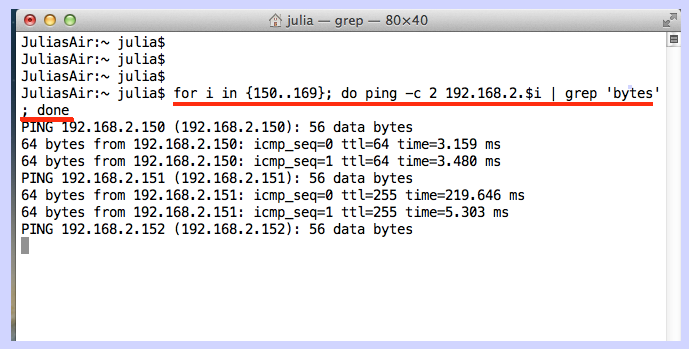
The network utilities under SNMP tools are, MIB Browser
#Subnet ping tool update
You can remotely update the system details of your network devices, right from your OpUtils console. System Details Update updates the device details, including Sys Name and Sys Location, and also shows you its status. By specifying the SNMP write community, you can update the system details of a device by scanning its IP, or a group of devices by scanning a range of IPs. Gain visibility into the details of your networked SNMP-enabled devices, and update or edit them using IP Tools network utilities. Reset unwanted Transmission Control Protocol (TCP) connections established between the switches and routers in the network using TCP Reset network IP tool. This tool is a part of OpUtils network IP tools, which enables you to explore devices and hosts in your network.
#Subnet ping tool software
Gain complete visibility into SNMP-enabled device details, such as System Snapshot, Process Scan, Software Scan, and more using the System Explorer tool. View details specific to your network ports, such as whether a port is open or occupied, services running on an occupied port, and responding ports using the Port Scanner tool. Scan your entire IP address range with ICMP or SNMP, and view the availability of devices, forward and reverse lookup actions, and more using Network Scanner. The IP tools for network monitoring are, Network Scanner The details pulled by this IP tool can be also used to work with several other IP tools.
#Subnet ping tool mac
View and manage your inventory information with the MAC IP List tool, which regularly updates this information. Perform IP lookup to access details about IP location, MAC Address, DNS Name, NIC Type, and more. Get a clear view of your IP Address space by managing your Server IP and DHCP Servers combined. Pull IP Scopes, and relate your available and used IP addresses to your DHCP Servers with DHCP Scope Monitor. Verify the host associated with an IP by fetching the host of the node whose IP is known and vice versa.

View details such as MAC Address, System Name, System Type, and more details on the MAC associated with the target IP address. Verify the MAC address associated with a particular IP address by performing an IP lookup in your network address space. IP Address Monitoring tools MAC Address Resolver This IP tool displays the number of hops the packet takes to reach the target device, and displays the IP address for each hop. Gain visibility into the path taken by a packet in a network with Trace Route. This router acts as the proxy for the target device. Verify if a device behind a proxy is online by pinging the Cisco router using the Proxy Ping tool. Query and verify using the Simple Network Management Protocol (SNMP) to check if an SNMP-enabled device is operating and network accessible using the SNMP ping tool. This IP tool uses the Internet Control Message Protocol (ICMP) to send an IP packet to the device and determines its status. Verify if a target host or server is alive and responding to network accesses using the Ping tool. Rtt min/avg/max/mdev = 18.697/18.857/19.102/0.The IP tools included under IP ping tools are, Ping

Stance-1:/var/log/apache2# ping -c 4 -i 1 Ping - send ICMP ECHO_REQUEST to network hosts A moreįundamental strategy is to switch your ISP (Internet service provider). There are a few ways to lower your home's ping latency, the heavy Internet traffic has negative effect on ping latency, so Internet is faster and has lower package loss rate at night compare to daytime.

#Subnet ping tool 480p
You should keep in mind, ping latency and Internet speed is 2 different concept, high latency doesn't mean you are stuck at 480p resolution Netflix streaming, although For regular web browsing activities, the ping It also tells you how many packets hasīeen transmitted, how many packets has been received, and how many packets has been loss.įor online gaming, the ping latency to the game server should be kept under 100ms, it will be unbearable if the ping latency is over 200ms. Ping calculates the round-trip time (from you click a link to the content return from web server) from your home to any web server with a public IP address or a domain name. Have you ever stuck long delay in a Skype conversation? Have you ever frustrated about the latency during a online game session? You definitely should test the Internet delay time from your home to the website.


 0 kommentar(er)
0 kommentar(er)
